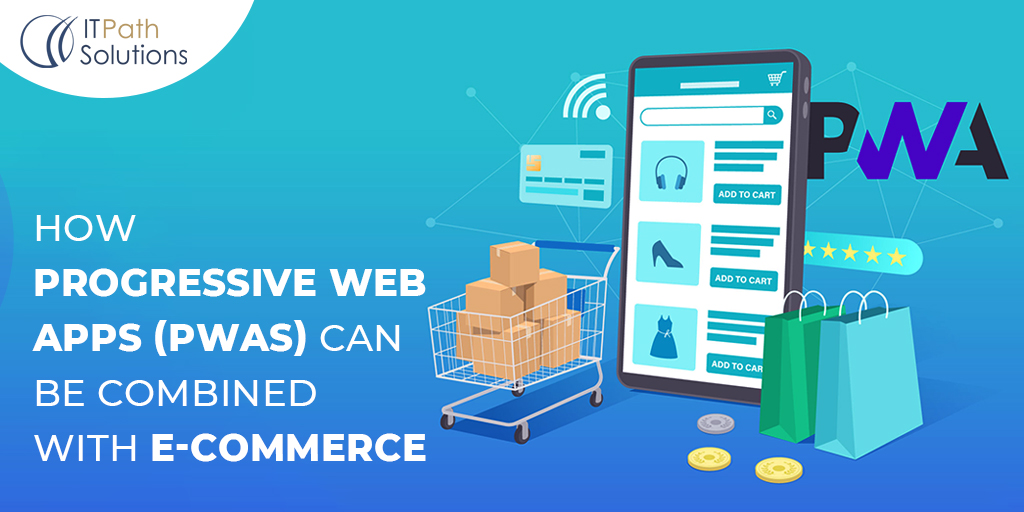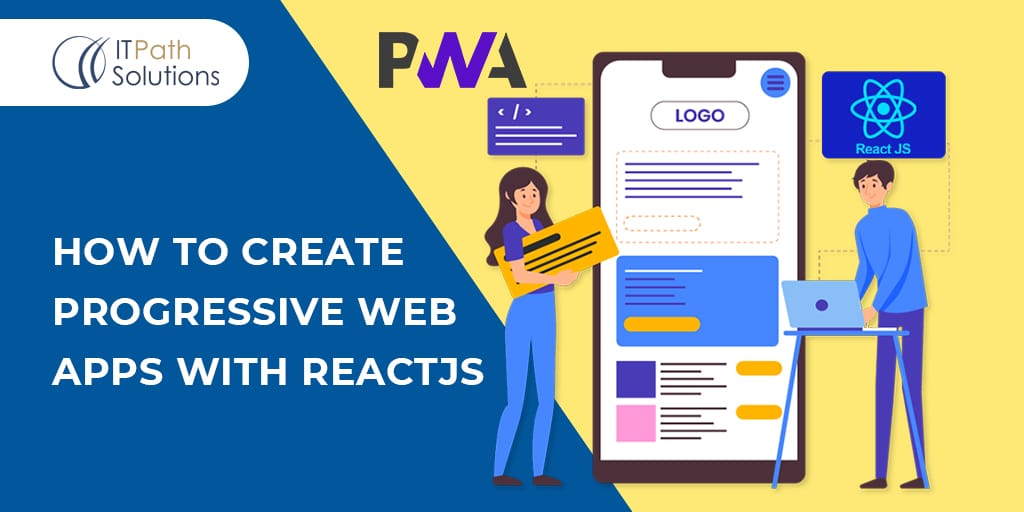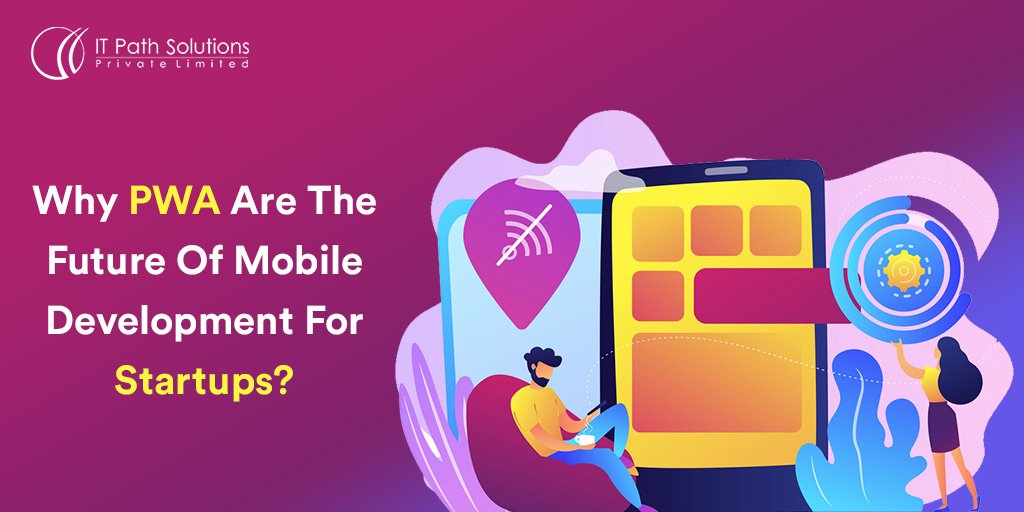How Progressive Web Apps (PWAs) Can Be Combined with E-commerce
Progressive Web Apps
In today’s digital age, online shopping has become an integral part of our lives. With the rise of mobile devices, people are increasingly using their smartphones and tablets to browse and buy products online. However, traditional mobile apps often come with a host of challenges such as high development and maintenance costs, poor user experience, and low discoverability
This is where Progressive Web Apps (PWAs) come in. PWAs are a type of web application that combines the best of both worlds – the functionality of native apps and the accessibility of web apps. They are designed to work seamlessly on any device or platform, offer fast loading times, and offline functionality, among other features.
E-commerce, on the other hand, refers to the buying and selling of goods or services online. E-commerce has been growing rapidly in recent years, with more and more businesses and consumers embracing online shopping. However, e-commerce also faces its own set of challenges such as low conversion rates, cart abandonment, and lack of customer loyalty.
The purpose of this article is to explore how PWAs can enhance e-commerce and benefit both merchants and customers. We will discuss the advantages of PWAs for e-commerce, showcase some successful examples, provide a guide on how to create a PWA for an e-commerce store, offer best practices, and more. By the end of this article, you’ll have a better understanding of the potential of PWAs for e-commerce and how to leverage them for your own business.
Advantages of PWAs for eCommerce
Fast loading times and offline functionality
PWAs use caching and other techniques to provide fast loading times, even on slow networks. They also allow users to access content and features offline, which is especially useful for E-commerce stores that want to ensure a seamless shopping experience regardless of network conditions.
Improved user experience and engagement
PWAs can offer a more seamless and immersive experience than traditional web apps, thanks to features such as push notifications, home screen icons, and full-screen mode. These features can increase user engagement, retention, and conversion rates, leading to higher revenue for E-commerce stores.
Lower development and maintenance costs compared to native apps
Developing a native mobile app can be a complex and costly process that requires specialized skills and resources. In contrast, PWAs can be developed using web technologies such as HTML, CSS, and JavaScript, which are more widely available and easier to learn. Additionally, PWAs do not require app store approval or updates, which can save time and money.
Increased discoverability and accessibility
PWAs can be easily shared and accessed via a URL, which means they are more discoverable and accessible than native apps. They can also be optimised for search engines and social media, which can lead to more traffic and visibility for E-commerce stores.
Better security and privacy
PWAs are served over HTTPS, which provides encryption and authentication to protect against data breaches and attacks. Additionally, PWAs do not require users to share personal information or grant unnecessary permissions, which can enhance their privacy and trust.
Overall, the benefits of PWAs for E-commerce stores can lead to a better user experience, increased revenue, and lower costs, making them a compelling option for businesses of all sizes.
Examples of PWAs in E-commerce
Lancôme
Lancôme, the luxury cosmetics brand, created a PWA to offer a fast and seamless shopping experience to its customers. The PWA features offline functionality, push notifications, and a personalized homepage that displays products based on the user’s preferences and purchase history. The PWA also uses a pre-rendering technique that speeds up the loading times of product pages, resulting in a 17% increase in conversions and a 53% increase in mobile sessions.
Flipkart
Flipkart, the Indian E-commerce giant, launched a PWA to improve its mobile web experience and attract new users. The PWA features a home screen icon, push notifications, and a “Lite” mode that reduces data usage and loading times. The PWA also allows users to add a shortcut to their home screen, making it easily accessible like a native app. As a result, Flipkart saw a 70% increase in conversions and a 40% increase in time spent on site.
AliExpress
AliExpress, the Chinese E-commerce platform, developed a PWA to improve its mobile web experience and reach new customers in emerging markets. The PWA features a home screen icon, offline functionality, and push notifications. The PWA also uses a pre-caching technique that loads pages in the background, resulting in a 104% increase in conversion rates and a 74% increase in time spent on site.
These examples demonstrate the benefits of PWAs for E-commerce stores, including faster loading times, improved user experience, and increased engagement and conversion rates. By leveraging the unique features of PWAs, E-commerce stores can enhance their online presence and provide a seamless shopping experience to their customers.
How to Combine PWAs with E-commerce
Choose a reliable PWA development platform
To create a PWA for your E-commerce store, you need to choose a reliable development platform that supports the latest web technologies and offers tools for building and testing PWAs. Some popular options include Angular, React, Vue, and Ionic.
Optimize your PWA for mobile devices
Since PWAs are designed to work seamlessly on mobile devices, it’s important to optimize your PWA for the best possible mobile experience. This includes optimizing your images and videos for mobile screens, using responsive design techniques to adapt your layout to different screen sizes, and ensuring that your content is easy to read and navigate on smaller screens.
Implement push notifications
Push notifications are a powerful tool for engaging your users and driving repeat visits to your E-commerce store. By implementing push notifications in your PWA, you can send personalized messages to your users based on their browsing and purchase history, such as discounts, promotions, and new product launches.
Use offline functionality
One of the biggest advantages of PWAs is their ability to function offline, which means that your users can still access your content and features even when they don’t have an internet connection. By implementing offline functionality in your PWA, you can provide a seamless shopping experience to your users and increase engagement and retention rates.
Enable home screen icons and full-screen mode
To make your PWA feel more like a native app, you can enable home screen icons and full-screen mode, which allows your users to access your PWA from their home screen and enjoy a more immersive browsing experience.
Implement a secure payment gateway
Since E-commerce stores deal with sensitive financial information, it’s important to implement a secure payment gateway that protects your users’ data and complies with industry standards. By using a trusted payment gateway in your PWA, you can provide a secure and seamless checkout process that inspires trust and confidence in your users.
By combining PWAs with E-commerce, you can offer a fast, seamless, and engaging shopping experience to your users while reducing development and maintenance costs compared to native apps. By implementing the above strategies, you can create a successful PWA for your E-commerce store and stay ahead of the competition.
Best Practices for PWAs in E-commerce
Focus on speed and performance
Fast loading times are critical for E-commerce stores since users expect to find what they’re looking for quickly and easily. To ensure optimal speed and performance, you should use compression techniques to reduce the size of your images and videos, minimise the use of third-party scripts and plugins, and optimise your code for fast rendering and processing.
Provide a seamless checkout process
The checkout process is a critical part of the E-commerce experience, and it’s essential to make it as seamless and easy to use as possible. To achieve this, you should use a one-page checkout process that eliminates unnecessary steps and fields, provide a progress bar that shows users where they are in the checkout process, and offer multiple payment options to cater to different user preferences.
Use personalized recommendations and offers
Personalization is a powerful tool for increasing engagement and driving sales in E-commerce. By using data analytics and machine learning algorithms, you can offer personalised product recommendations and offers to your users based on their browsing and purchase history. This can help to increase conversions and encourage repeat purchases.
Implement social sharing and user-generated content
Social sharing and user-generated content are powerful tools for building brand awareness and driving traffic to your E-commerce store. By implementing social sharing buttons and encouraging users to share their experiences and purchases on social media, you can reach new audiences and build a community around your brand.
Test and optimize your PWA regularly
Like any digital product, PWAs require regular testing and optimization to ensure that they’re working properly and meeting user needs. To achieve this, you should use A/B testing and user feedback to identify areas for improvement, monitor your performance metrics regularly, and make incremental changes to your PWA based on data-driven insights.
By following these best practices, you can create a successful PWA for your E-commerce store that provides a fast, seamless, and engaging shopping experience to your users. By continually optimizing your PWA and staying up to date with the latest trends and technologies, you can stay ahead of the competition and provide value to your customers.
Conclusion
In conclusion, PWAs offer numerous benefits to E-commerce stores, including fast loading times, improved user experience, lower development costs, increased discoverability, and better security. By combining PWAs with E-commerce, merchants can provide a seamless shopping experience to their users while reducing costs and increasing engagement. To create a successful PWA, it’s important to follow best practices such as optimising for speed and performance, providing a seamless checkout process, using personalized recommendations, implementing social sharing, and regularly testing and optimising your PWA. By implementing these strategies, merchants can stay ahead of the competition and provide value to their customers.
 Healthcare
Healthcare  Education
Education  Real Estate
Real Estate  Logistic
Logistic  Fitness
Fitness  Tourism
Tourism  Travel
Travel  Banking
Banking  Media
Media  E-commerce
E-commerce  Themes
Themes
 Plugins
Plugins
 Patterns
Patterns


